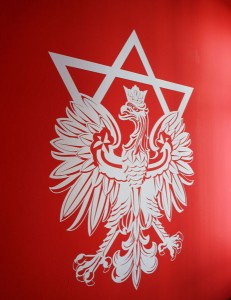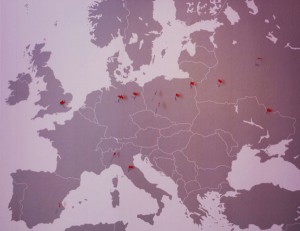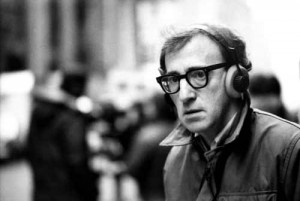

Initiated in 2007 by the Israeli artist Yael Bartana, the Jewish Renaissance Movement in Poland seeks to “bring back” 3.3 millions of Jews, “replenishing” the country which suffered the greatest loss of Jewish life between 1941 and 1945. An estimated three million Polish Jews were murdered by the National Socialists, 300 000 were able to flee.
The Renaissance Movement called an international conference in order to formulate its agenda at the 7th Berlin Biennale in May 2012. The movement was represented at last year’s Venice Biennale by various films portraying fictional “homecomings.” See more: www.jrmip.org/
Anna Povejsilova, Media
Woody Allen: A Documentary presents the life and work of one of the most influential Jewish filmmakers of the past half-century. In a series of interviews, colleagues and peers tell anecdotes and bestow panegyrics on Allen, among them Martin Scorsese, Diane Keaton, Scarlett Johansson, Naomi Watts, and Stephen Tenenbaum.

Woody Allen, © MCM, Foto: Brian Hamill
Unfortunately, few say more than what a “great guy” Allen is and how fantastic it is to work with him. The movie hints at, but misses every opportunity to ask more pertinent questions: How does Allen understand his Jewish background as a source and subject of his humour? Growing up in New York of the 1940s, how did National Socialism shape the neurotic Jewish characters he embodies in his films? What “in the early 1940s” turned him, a happy toddler, into a grumpy child? And why does he type his screenplays on an antiquated German typewriter he compares to a tank, which he believes will outlive him? A cinematographic equivalent of yellow press reporting, the film doesn’t do justice to one of the more subtle and intellectual figures in popular culture. (Woody Allen: A Documentary, directed by Robert B. Weide)
Naomi Lubrich, Media
One task that all of us working at the Jewish Museum share, one that is unwritten, undocumented, and often even unnoticed, is tracking and evaluating Jewish-related discussions and trends. Who is surprised by the Cologne verdict on circumcision? Who is still optimistic about the Arab Spring? Who is tired of all-white “apple design” for everything related to culture, even Jewish culture? Between doorways, at the photocopy machine, at the canteen, these comments unconsciously shape our work, influence our choice of topics and define the museum’s mission. We thought it might be worthwhile to voice some of our opinions and chose a budding literary genre: part lunch conversation, part feuilleton, part diary, part text message. Welcome to the blog of the Jewish Museum Berlin.


